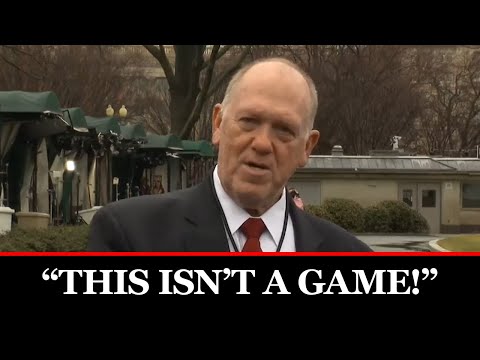**Trends in Enforcement: A Look at Recent Operations Against Sanctuary Cities**
In a whirlwind of law enforcement activity, recent operations targeting Transnational criminal organizations and sanctuary cities have sparked debate across the nation. The Trump administration promised a focused approach to combatting the dangerous activities associated with groups like the notorious Tren de Aragua, and the latest operations represent a significant step in that direction. As law enforcement ramped up their efforts, concerns arose regarding leaks that could jeopardize the safety of officers and the overall effectiveness of the missions.
During a media briefing, officials expressed their determination to tackle the threat posed by sanctuary cities, which they claim provide cover for criminal activities. The administration has made it clear that they will not shy away from holding these cities accountable for what they see as reckless policies that endanger public safety. Law enforcement released a statement asserting that victims of crime, regardless of their immigration status, want a secure community free of the potential for violence. It’s hard to argue against the idea that neighborhoods should be safe, and officials warn that the release of dangerous criminals endangers everyone, including those in immigrant communities.
However, criticism has emerged from various corners concerning the efficacy of these operations. Some law enforcement agencies have reported that their detention facilities are over capacity, leading to the release of certain detainees. In a situation as complex and urgent as this, the pressure mounts to ensure that no dangerous individuals return to the streets. Officials highlight that keeping dangerous criminals locked up and away from communities is their top priority, but they also face challenges in managing the logistics of immigration enforcement.
The recent operations culminated in the arrest of numerous suspects, yet the precise number remains a closely-guarded secret. This secrecy is partially explained by the administration’s caution against leaks. Officials noted that when information about operations is disseminated too widely, criminals can evade capture or, worse yet, target law enforcement personnel. The balance between transparency with the public and operational security has become an increasingly tightrope walk for federal agencies.
In addition to ongoing efforts to dismantle gangs and enforce immigration policies, the administration is also seeking innovative solutions to bolster the bed capacity in ICE detention centers. Proposals from states looking to partner with the federal government in this effort suggest that there’s a willingness to accommodate the complex needs of immigration enforcement. Yet, treading carefully remains paramount—maintaining public order while respecting the rights of all individuals, documented or otherwise, is a delicate dance that officials are attempting to master.
As these operations develop, the broader conversation around immigration policy and law enforcement techniques continues. There is an undeniable desire for a safer nation, but it must be balanced with respect for individual liberties and the rights of communities. The administration’s commitment to reversing catch-and-release policies and its focus on arresting public safety threats signify a determined stride toward a comprehensive approach to immigration and crime. The road ahead may be fraught with hurdles, but one thing stands clear: the conversation surrounding these issues is far from over, and everyone is keeping a close watch on what comes next.



